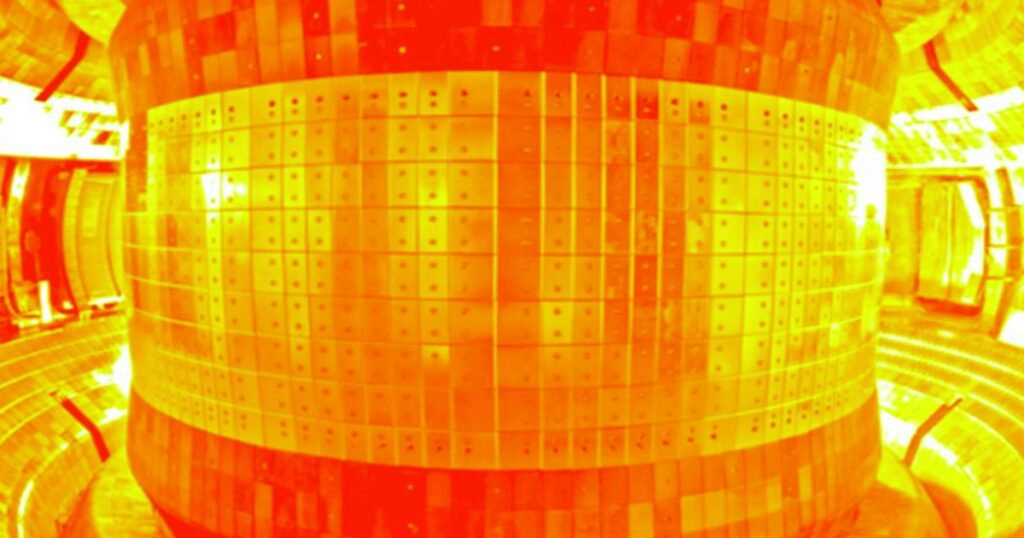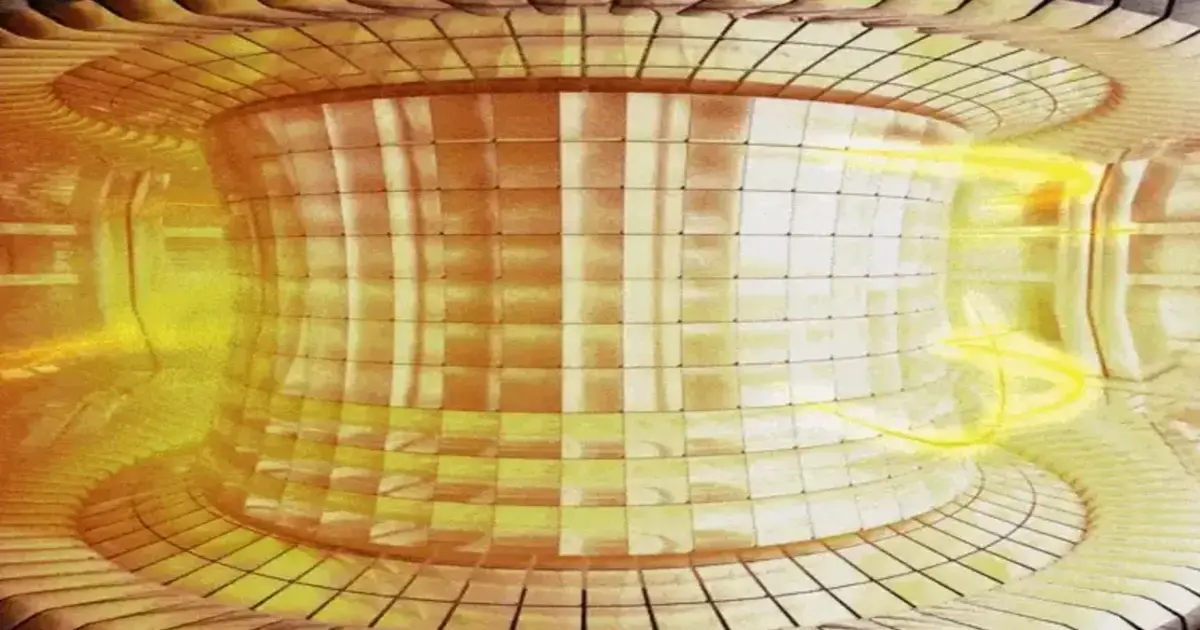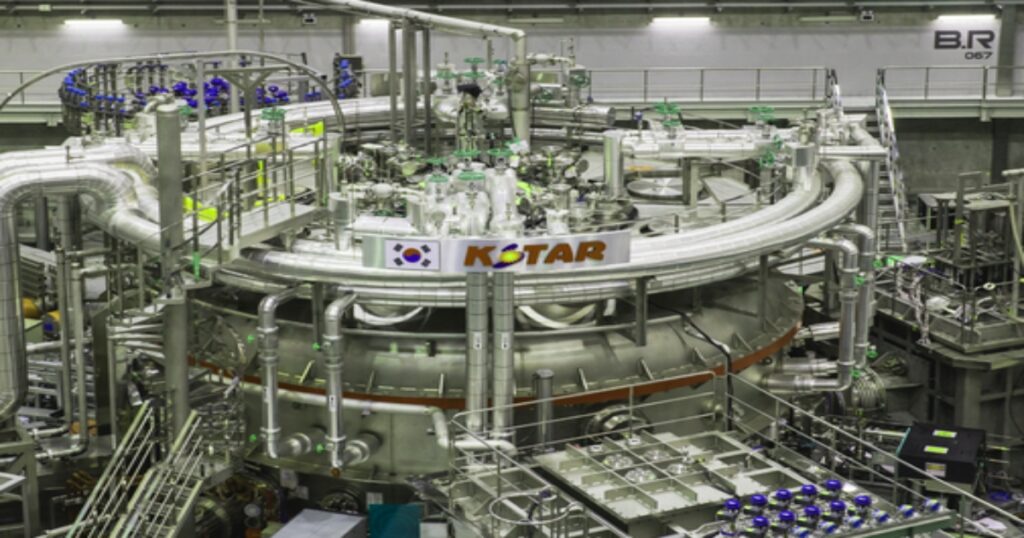South Korea’s Artificial Sun has achieved a groundbreaking Fusion Record by reaching a temperature of 100 million degrees Celsius for a duration of 48 seconds.
South Korea’s nuclear fusion reactor, known as the Artificial Sun, has achieved a groundbreaking feat by setting a new fusion record. Scientists have successfully superheated a plasma loop to an astonishing temperature of 180 million degrees Fahrenheit (100 million degrees Celsius) for a duration of 48 seconds.
This remarkable achievement surpasses the previous world record of 31 seconds, which was also set by South Korea’s Korea Superconducting Tokamak Advanced Research (KSTAR) reactor. It is worth noting that this is not the first time the KSTAR reactor has made history, as it previously established the record in 2021. This significant milestone marks a modest yet crucial step towards unlocking the potential of renewable energy on a massive scale.
The fusion reactor project has now etched its name in the annals of scientific progress, thanks to this remarkable accomplishment during the testing period spanning from December 2023 to February 2024.

For nearly seven decades, scientists have been striving to harness the power of nuclear fusion, the same process that generates starlight. Main-sequence stars convert mass into light and heat through the fusion of hydrogen atoms under extreme pressures and temperatures, resulting in the creation of helium. This method yields copious amounts of energy without the production of greenhouse gases or enduring radioactive waste.
Nevertheless, replicating the conditions present within the cores of stars is a formidable challenge. Plasma, one of the four fundamental states of matter, consists of free electrons with negative charges and positive ions. The most widely used configuration for fusion reactors is the tokamak, which confines plasma within a donut-shaped reactor chamber by employing powerful magnetic fields.
However, maintaining the hot and turbulent plasma coils stable enough for nuclear fusion to take place has proven to be a demanding task. The first tokamak was constructed in 1958 by Soviet scientist Natan Yavlinsky, yet no one has succeeded in developing a reactor capable of generating more energy than it consumes.

The replication of the mechanism that generates heat and light in stars, known as fusion, is a complex process. Experts in this field aim to harness the immense power released by fusing hydrogen and other light elements to provide limitless and carbon-free electricity, often referred to as the “Holy Grail” of the energy transition.
One of the major challenges in fusion is managing a plasma that is hot enough to fuse. Fusion reactors need to operate at lower pressures than those found in star cores, which requires them to be built at temperatures several times hotter than the sun. For instance, while the sun’s core reaches temperatures of around 27 million Fahrenheit (15 million Celsius), its pressure is about 340 billion times that of Earth’s sea level air.
Heating the plasma to these extreme temperatures is a relatively straightforward task. However, the real challenge lies in controlling the plasma to prevent it from destroying the fusion process and burning through the reactor. Magnetic fields or lasers are commonly used to achieve this control. Scientists have made modifications to the reactor’s design, such as replacing carbon with tungsten in the tokamak’s “divertors” to enhance their effectiveness in removing heat and ash from the reactor. These adjustments aim to extend the plasma’s burning period beyond the previous record-breaking run.

The success of tungsten diverters can offer valuable insights for the ITER project, a $21.5 billion fusion megaproject being constructed in France with the collaboration of various nations such as the US, the EU, Russia, China, Korea, and China.
Si-Woo Yoon, the director of the KSTAR Research Center, highlighted the achievement of surpassing previous KSTAR records through meticulous hardware testing and campaign preparation despite being the first experiment conducted with the new tungsten divertors.
KSTAR scientists have set a goal to sustain temperatures of 180 million F for 300 seconds by 2026, aiming to further advance fusion reactor technology.
This accomplishment adds to the achievements of other fusion reactors worldwide, including the U.S. government-funded National Ignition Facility (NIF), which gained attention for briefly producing more energy than it consumed.
What is an Artificial Sun?
The term “artificial sun” pertains to a contraption that imitates the Sun’s energy generation process, known as nuclear fusion. At present, a fully operational artificial sun does not exist. Nevertheless, numerous nations and research institutions are actively engaged in nuclear fusion research projects, striving to achieve this technological feat.
Other Countries to Achieve Artificial Sun Record:
China’s EAST (Experimental Advanced Superconducting Tokamak) has set a new world record in nuclear fusion research. The remarkable achievement involves sustaining a nuclear fusion reaction for an impressive duration of 17 minutes (1,056 seconds) at an astonishing temperature of 126 million degrees Celsius.
This temperature is five times hotter than the core of the sun. Additionally, China’s EAST holds another record for the longest steady-state high-confinement mode plasma operation, maintaining plasma for 403 seconds (nearly 7 minutes) on April 12th, 2023.
Conclusion:
An artificial sun, which mimics the fusion power of our actual sun, continues to be an aspiration in the scientific community. Overcoming significant technological challenges, such as achieving extreme temperatures and maintaining control, is crucial.
Nevertheless, advancements in fusion reactor research provide encouraging glimpses into a future where clean and boundless energy could be harnessed. Although we are making progress, it is likely that the sun will maintain its dominance for the foreseeable future.
Do not forget to share your opinion with us to provide you with the best posts !




0 Comments